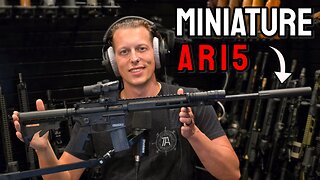Premium Only Content

cute Kid in horse yard PLAY with HORSE
Playing with a horse can be a fun and rewarding experience for a child, but it's important to prioritize safety and introduce the child and the horse properly. Here are some steps to consider when a kid wants to play with a horse in a yard:
1. **Supervision:** Always ensure there is adult supervision when a child interacts with a horse. Horses are large animals, and their behavior can be unpredictable.
2. **Introductions:** Start by introducing the child to the horse from a safe distance. Allow the child to observe the horse's behavior and get comfortable with its presence.
3. **Calm Environment:** Choose a quiet and calm environment for the interaction. Horses can be sensitive to loud noises and sudden movements.
4. **Educate the Child:** Teach the child about horse behavior and body language. Explain that horses might react to certain movements or actions, so the child should approach the horse slowly and gently.
5. **Stay Outside the Stall:** If the horse is in a stall, it's best to keep the child outside the stall for safety reasons. Stall doors can swing open unexpectedly, and horses might react differently when confined.
6. **Gentle Approach:** When the child is ready to approach the horse, teach them to extend a hand for the horse to smell. Horses use their sense of smell to get to know new things.
7. **Petting:** Show the child how to pet the horse gently and calmly, preferably on the neck or shoulder. Avoid sudden movements or loud noises that could startle the horse.
8. **Noisy Play:** While it's okay for the child to play around the horse, avoid loud or sudden movements that might scare the horse. Horses are prey animals and can be easily spooked.
9. **Horse's Reactions:** Explain to the child that horses might move their heads, snort, or make other sounds as a way of communicating. Let the child know that this is normal behavior.
10. **Avoid Kicking or Rough Play:** Make sure the child understands that they should never kick or hit the horse, even in play. Horses can perceive this as a threat and might react negatively.
11. **Treats:** If the horse is accustomed to treats, show the child how to offer them safely and appropriately. Be cautious not to overfeed treats, as horses have sensitive digestive systems.
12. **Horse's Comfort:** Teach the child to observe the horse's comfort level. If the horse seems agitated or uncomfortable, it's best to back away and give the horse space.
13. **Age-Appropriate Activities:** Depending on the child's age and experience level, engage in age-appropriate activities. This might include grooming the horse, helping with feeding (under supervision), or even leading the horse with an adult's assistance.
14. **Helmet and Protective Gear:** If the child is going to be in close proximity to the horse, consider having them wear a riding helmet or other appropriate protective gear.
Remember, safety is paramount when kids interact with horses. Horses are magnificent animals, but they can be powerful and have their own instincts and reactions. By taking the time to educate both the child and the horse, you can create a positive and safe experience for everyone involved.
-
 LIVE
LIVE
Tundra Tactical
5 hours agoWhy the SIG P320 Is the King of Gun Memes 💥😂
102 watching -
 1:39:35
1:39:35
Kevin Trudeau
7 hours agoKevin Trudeau: The Complete Creation Algorithm to Manifest Your Goals & Desires
331 -
 1:11:14
1:11:14
Ohio State Football and Recruiting at Buckeye Huddle
3 hours agoOhio State Football: Instant Reaction from the 14-7 win over Texas
11 -
 18:01
18:01
Tactical Advisor
1 hour agoNew Miniature AR15 / New Guns | Vault Room Live Stream 037
9602 -

GamerGril
2 hours agoGG BINGO | 💕 The Beast Inside 💕 | Not Even Scared
5.85K3 -
 2:02:10
2:02:10
Akademiks
3 hours agoWar in RAT-LANTA. Young Thug vs Gunna vs Ralo vs YSL MONDO. Who Will Le Bebe Pick. FINAL CRASHOUT!
28.7K7 -
 1:13:36
1:13:36
Jeff Ahern
3 hours ago $2.24 earnedThe Sunday Show with Jeff Ahern
12.2K6 -
 LIVE
LIVE
GoodLifeGaming
5 hours ago🔴LIVE - TARKOV PVP SOLO LEARNING - 2 MIL STASH - LEVEL 14 - WOODS LOOT RUNS - POSSIBLE QUESTING
60 watching -
 29:16
29:16
The Shannon Joy Show
1 day ago🔥🔥The Extraordinary Healing POWER Of The Sun - With Dr. Chad Walding🔥🔥
23K5 -
 LIVE
LIVE
KammieKamz
2 hours agoKamz & Lydia take on REBIRTH ISLAND RANK to diamond *Agent of Chaos 😏💨 | Warzone Queen on Rumble”
27 watching